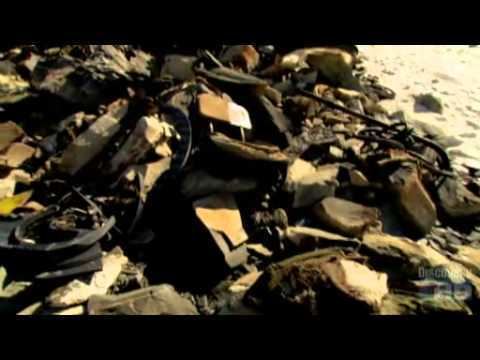Summary Engine failure Fatalities 5 Number of deaths 5 Survivor 12 Crew count 16 | Passengers 1 Survivors 12 Date 13 February 1950 Passenger count 1 | |
 | ||
Similar 1950 Douglas C‑54D di, Llandow air disaster, 1950 Australian National, 1961 Goldsboro B‑52 crash, TWA Flight 903 | ||
On 14 February 1950, a Convair B-36B, Air Force Serial Number 44-92075 assigned to the 7th Bomb Wing at Carswell Air Force Base, crashed in northern British Columbia after jettisoning a Mark 4 nuclear bomb. This was the first such nuclear weapon loss in history. The B-36 had been en route from Eielson Air Force Base near Fairbanks, Alaska to Carswell AFB in Fort Worth, Texas, more than 3000 miles south-east, on a mission that included a simulated nuclear attack on San Francisco.
Contents
Incident
Plane 44-92075 was flying on a simulated nuclear strike combat mission against the Soviet Union. The B-36 took off from Eielson AFB with a regular crew of 15 plus a Weaponeer and a Bomb Commander. The plan for the 24-hour flight was to fly over the North Pacific, due west of the Alaska panhandle and British Columbia, then head inland over Washington state and Montana. Here the B-36 would climb to 40,000 feet (12,000 m) for a simulated bomb run to southern California and then San Francisco, it would continue its non-stop flight to Fort Worth, Texas. The flight plan did not include any penetration of Canadian airspace. The plane carried a Mark IV atomic bomb, containing a substantial quantity of natural uranium and 5,000 pounds (2,300 kg) of conventional explosives. According to the USAF, the bomb did not contain the plutonium core necessary for a nuclear detonation.
Cold weather (−40 °F/−40 °C on the ground at Eielson AFB) adversely affected the planes involved in this exercise, and some minor difficulties with 44-92075 were noted before takeoff. Seven hours into the flight, three of the six engines began shooting flames and were shut down, and the other three engines proved incapable of delivering full power. The subsequent investigation blamed ice buildup in the carburator air intakes.
The crew decided to abandon the aircraft because it could not stay aloft with three engines out of commission while carrying a heavy payload. The atomic bomb was jettisoned and detonated in mid-air, resulting in a large conventional explosion over the Inside Passage. The USAF later stated that the fake practice core on board the aircraft was inserted into the weapon before it was dropped.
The aircraft commander steered the plane over Princess Royal Island to spare his crew having to parachute into the cold North Pacific, whereupon the crew bailed out. Before bailing out last, he set a turning course toward the open ocean using the autopilot.
The plane had been in constant radio contact with Strategic Air Command headquarters at Offutt AFB, Nebraska, and within minutes of the bailout the Royal Canadian Air Force launched Operation Brix to find the missing men. Poor weather hampered search efforts; nevertheless 12 of the 17 men were eventually found alive. One of the five deceased, the weaponeer, was recovered in 1954 from the crash site. The remaining four airmen were believed to have bailed out of the aircraft earlier than the surviving crew members, and it was assumed that they landed in the ocean and died of hypothermia. Canadian authorities were never told that the aircraft was carrying a nuclear weapon.
Subsequent events
To search for the B-36, planes were pulled off the search for a Douglas C-54 that had disappeared three weeks earlier. A more exhaustive search was not launched for the plane, as it was believed to be at the bottom of the Pacific. Three years later, an RCAF flight searching for the missing de Havilland Dove aircraft of Texas millionaire oilman Ellis Hall spotted the B-36's wreckage. It was found on the side of Mount Kologet, about 50 miles (80 km) east of the Alaskan border, roughly due east of the towns of Stewart, British Columbia and Hyder, Alaska, on the east side of the isolated Nass Basin northwest of Hazelton, British Columbia.
The USAF immediately began an investigation. A team was sent in September 1953, as the effort was given a high priority, but they failed to reach the site after 19 days of trudging through the wilderness. The effort was resumed the following year with better equipment, and in August 1954 a new team of USAF personnel accompanied by a local guide reached the wreckage. They recovered important components and then used explosives to destroy what was visible above the snow.
In 1956, two civilian surveyors chanced on the wreck and noted its exact location, which otherwise remained unknown for the next 40 years. In 1997 one of the surveyors provided the coordinates to two distinct expeditions, one American and one led by the Canadian Department of National Defence, seeking to conduct an environmental analysis of the site. Both expeditions reached the wreck around the same time, and members were apparently the first humans to set foot in the area since 1956. The Canadian-led mission found no unusual radiation levels. In late 1998, the Canadian government declared the site protected. A portion of one of the gun turrets is on display at The Bulkley Valley Museum in Smithers, British Columbia.
In late October 2016 a diver reported he had discovered something that looked like a segment of the partially disarmed Mark IV nuclear bomb that the co-pilot said they had dumped before the crash. The location near Pitt Island in the Inside Passage was mistakenly reported as off Haida Gwaii. The Royal Canadian Navy later confirmed that the item was not the Mark IV bomb.
